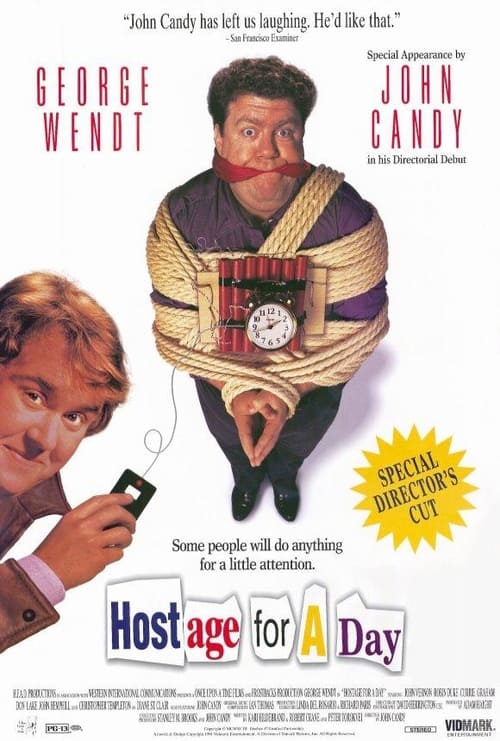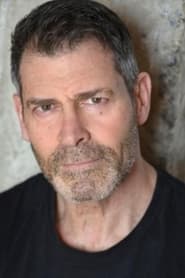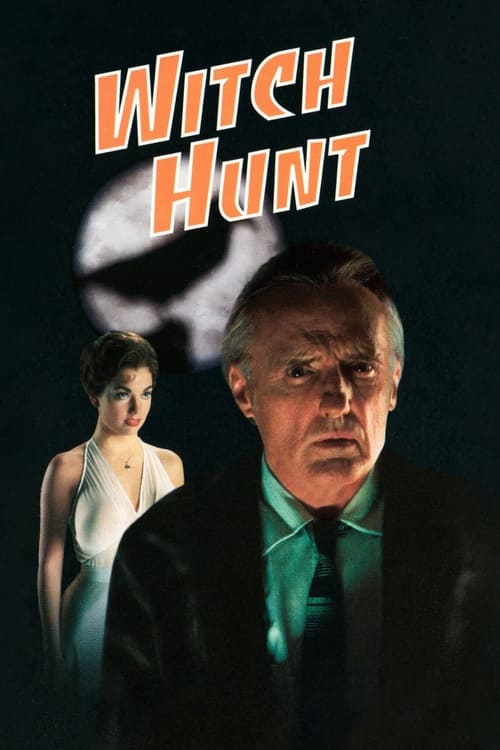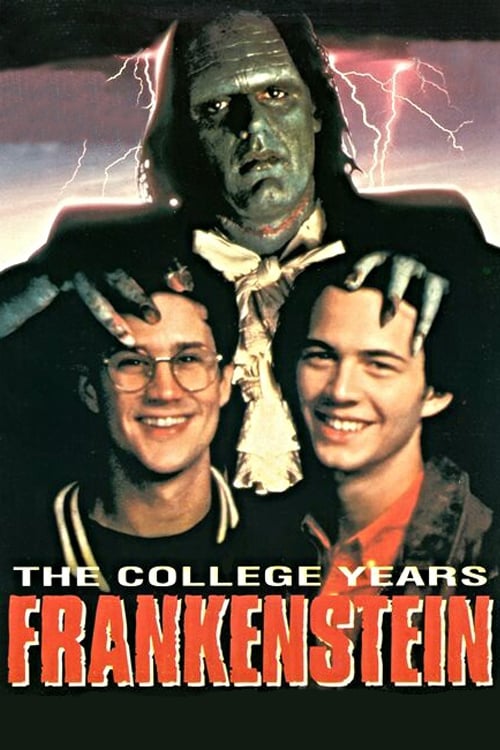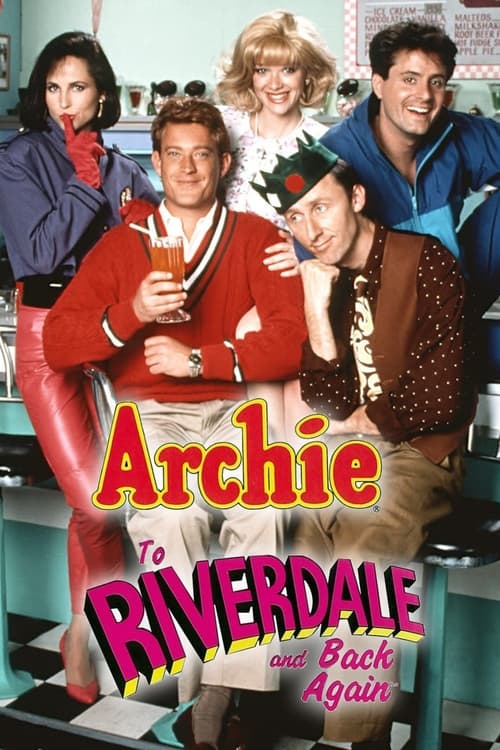
Ask Your Own Question
What is the plot?
The sun rises over a quiet suburban neighborhood on a crisp morning in early spring, the kind of day that feels like it could hold anything--promise, regret, or a sudden, desperate change. Inside a modest home, Warren Kooey, a forty-one-year-old copy shop worker, stares at his reflection in the bathroom mirror. It's his birthday, but there's no celebration, only the weight of years pressing down on him. His reflection speaks to him, not in words, but in the hollow look in his eyes, the slump of his shoulders. "You need to do something," the mirror seems to say. "You can't go on like this."
Warren's life is a slow suffocation. His wife, Elizabeth Kooey, is sharp-tongued and restless, always nagging, always dissatisfied. She's just drained their entire bank account--$40,000--to pay for a lavish home remodeling job by Hondo, a blond, long-haired Italian heartthrob with a charming smile and a reputation for being irresistible to women. Warren suspects, and the evidence is hard to ignore, that Elizabeth is having an affair with Hondo. The house, once a symbol of their shared dreams, is now a monument to Warren's humiliation, its walls echoing with the sound of drills and the laughter of Elizabeth and Hondo.
At work, things are no better. Warren toils in a copy shop, a place that reeks of toner and monotony. His boss, V.D. Regan, is his overbearing father-in-law, a man who treats Warren like a child, berating him for every mistake, no matter how small. "You're a grown man, Warren," Regan barks, "but you act like a boy who's afraid of his own shadow." The other employees, including Ronny and Jackie, watch with pity or amusement, but no one stands up for him. Warren feels invisible, trapped in a life that's slipping away from him.
That night, Warren sits alone in the living room, the house quiet except for the hum of the refrigerator. He stares at a brochure for Alaska, a place he's dreamed of for years. It's a land of open skies, of freedom, of a fresh start. "Alaska," he whispers, "that's where I need to be." But Alaska is far away, and Warren has no money, no plan, no courage. He feels like a ghost in his own life.
The next morning, Warren's reflection speaks to him again. "You need to take control," it says. "You need to do something drastic." Warren knows what he has to do. He can't run away, not yet, but he can force a change. He decides to fake his own kidnapping. He'll call the police, pretend to be held hostage by an imaginary Russian terrorist, and demand a ransom. The money will be his ticket to Alaska, his chance to escape.
Warren waits until the house is empty, then dials 911. His voice is calm, controlled. "This is Warren Kooey," he says. "I'm being held hostage by a Russian terrorist. He's demanding $50,000 in ransom. If you don't pay, he'll kill me." The police dispatcher is skeptical, but Warren insists. "I'm serious," he says. "You have to send the SWAT team."
The call is routed to the local SWAT team, led by Lt. Sneed, a man who's seen better days. The team is underfunded, understaffed, and more than a little incompetent. Sneed gathers his men, but they're not the elite force of action movies. They're a ragtag group of misfits, led by Sneed, who's more concerned with budget cuts than with saving lives. "We can't afford $50,000," Sneed mutters. "We can't even afford new uniforms."
The SWAT team arrives at Warren's house, guns drawn, ready for a showdown. Warren, playing his part, shouts from inside. "I'm in here! He's got a gun! He's crazy!" The police surround the house, but their efforts are half-hearted. Sneed tries to negotiate, but Warren's demands are impossible. The team is stymied by their own incompetence and lack of resources. "We can't pay the ransom," Sneed says. "We don't have the money."
Warren is frustrated. His plan is falling apart. He thought the police would pay, that he could collect the money and disappear. But now, he's stuck, his fake hostage situation turning into a farce. He paces the house, talking to his reflection. "What now?" he asks. "What do I do?"
As the SWAT team debates their next move, a real crisis unfolds. A group of men, led by Yuri Petrovich, a Russian terrorist with a menacing presence, arrives at the house. Petrovich is not imaginary; he's real, and he's dangerous. He and his men storm the house, taking Warren hostage for real. "You're coming with us," Petrovich says, his voice cold and commanding. Warren is stunned. His fake hostage situation has become a nightmare.
The SWAT team is thrown into chaos. Sneed and his men are unprepared for a real hostage crisis. They try to negotiate, but Petrovich is not interested in talking. "We want $50,000," he says. "If you don't pay, we'll kill him." The police are desperate. They can't afford the ransom, and they can't risk a rescue attempt. Warren is trapped, his life in the hands of a real terrorist.
Inside the house, Warren is terrified. Petrovich and his men are brutal, unpredictable. They tie Warren up, threaten him, and make it clear that they're not playing games. Warren tries to stay calm, to think of a way out, but he's out of his depth. He talks to his reflection again, but this time, the mirror offers no comfort. "You're on your own," it seems to say.
As the hours pass, the situation grows more tense. The police try to negotiate, but Petrovich is unmoved. Warren's family is frantic. Elizabeth, despite her affair with Hondo, is worried about Warren. She pleads with the police to save him. V.D. Regan is furious, blaming Warren for the mess. "This is your fault," he shouts. "You brought this on yourself."
Warren's thoughts turn to Alaska, to the life he dreamed of. He remembers Diane St. Clair, his childhood sweetheart, a woman he hasn't seen in years. In flashbacks, he sees her smiling, laughing, a symbol of a simpler, happier time. "If only I could go back," he thinks. "If only I could start over."
The climax comes when the police, desperate to save Warren, launch a rescue attempt. Sneed and his men storm the house, guns blazing. There's a shootout, a flurry of chaos. Petrovich and his men fight back, but the police are determined. In the end, Petrovich is captured, his men subdued. Warren is freed, shaken but alive.
The aftermath is a mix of relief and reflection. Warren is reunited with his family, but things are not the same. Elizabeth is remorseful, realizing the depth of her betrayal. V.D. Regan is humbled, seeing Warren in a new light. Warren himself is changed. He's faced death, faced his own weaknesses, and come out the other side.
In the final scenes, Warren visits Diane St. Clair. They talk, laugh, and share memories. It's a moment of hope, of possibility. Warren doesn't go to Alaska, but he's found a new sense of purpose. He's no longer the man who stared at his reflection, trapped in a life he hated. He's Warren Kooey, survivor, and he's ready to face whatever comes next.
The film ends with Warren walking away from his old life, the sun setting behind him, a new chapter beginning. He's not sure where he's going, but he knows he's not going back. The mirror, once a symbol of his despair, is now a reminder of how far he's come. "You did it," he says to his reflection. "You're free."
More Movies Like This
Browse All Movies →
What is the ending?
In the ending of "Hostage for a Day," the main characters find themselves in a tense standoff. The situation escalates, leading to a resolution where the hostages are freed, and the captors face the consequences of their actions. The film concludes with a sense of relief for the hostages, but the emotional scars of the experience linger.
As the climax of "Hostage for a Day" unfolds, the tension in the air is palpable. The scene opens with the hostages, including the protagonist, feeling the weight of their captivity. They are bound and anxious, their faces reflecting a mix of fear and determination. The captors, desperate and volatile, are on edge, their motivations driven by a mix of desperation and misguided ideals.
The protagonist, who has been quietly observing the dynamics between the captors and the hostages, begins to formulate a plan. As the hours pass, the emotional strain becomes evident. The hostages share whispered conversations, their eyes darting around the room, searching for any opportunity to escape. The protagonist, feeling a surge of responsibility, takes it upon themselves to rally the others, instilling a sense of hope amidst the despair.
In a pivotal moment, the protagonist manages to establish a fragile rapport with one of the captors, who shows signs of doubt about their actions. This interaction is charged with emotion, as the protagonist appeals to the captor's humanity, revealing their own vulnerabilities and fears. The captor, torn between their role and the emerging connection, hesitates, creating a crack in the captors' resolve.
As the standoff reaches its peak, law enforcement arrives outside, their presence adding to the tension. The captors, realizing their situation is deteriorating, become increasingly erratic. The protagonist seizes this moment, urging the other hostages to remain calm and work together. The atmosphere is thick with anxiety as they prepare for a potential confrontation.
In a dramatic turn, the protagonist makes a bold move, distracting the captors long enough for the hostages to make a break for it. The scene is chaotic, filled with shouts and the sound of footsteps pounding against the floor. The hostages rush towards the exit, their hearts racing with a mix of fear and exhilaration. The captors, caught off guard, scramble to regain control, but the momentum has shifted.
As the hostages burst into the open air, they are met by the police, who quickly secure the area. The relief is overwhelming, tears streaming down the faces of the freed hostages as they embrace one another. The protagonist, though exhausted and shaken, feels a sense of triumph, having played a crucial role in their escape.
In the aftermath, the film shows the consequences for the captors. They are apprehended by law enforcement, their plans unraveled. The protagonist, now a symbol of resilience, reflects on the experience, understanding the profound impact it has had on their life. The emotional scars remain, but there is a newfound strength in the bonds formed during the ordeal.
The film concludes with a poignant moment, as the protagonist looks back at the scene of their captivity, a mixture of relief and sorrow washing over them. The journey has changed them, and while the physical threat has been neutralized, the emotional journey continues. The fate of the main characters is sealed; the hostages are free, but the experience will forever shape their lives, leaving them to navigate the complexities of trauma and recovery.
Is there a post-credit scene?
The movie "Hostage for a Day," produced in 1994, does not contain a post-credit scene. The film concludes its narrative without any additional scenes or content after the credits roll. The story wraps up with the resolution of the main plot, focusing on the characters' experiences and the aftermath of the hostage situation, leaving no further developments or surprises for the audience to discover after the credits.
Who are the main characters in Hostage for a Day?
The main characters in 'Hostage for a Day' include a group of inept criminals led by the character of 'Mickey', played by John Schneider, and the hostage, a wealthy businessman named 'Mr. Hargrove', portrayed by John McMartin. Additionally, there is 'Officer McGowan', played by John C. McGinley, who is involved in the police response to the hostage situation.
What motivates Mickey and his gang to take Mr. Hargrove hostage?
Mickey and his gang are motivated by desperation and a desire for quick money. They believe that kidnapping a wealthy businessman will provide them with a substantial ransom, which they think will solve their financial problems and elevate their status.
How does Mr. Hargrove react to being taken hostage?
Mr. Hargrove initially reacts with shock and disbelief when he is taken hostage. As the situation unfolds, he tries to maintain his composure and uses his wit to manipulate the situation, attempting to negotiate his release while also assessing the incompetence of his captors.
What comedic elements are present in the interactions between the hostages and the criminals?
The comedic elements arise from the incompetence of Mickey and his gang, who bumble through their plans and make absurd mistakes. Their interactions with Mr. Hargrove often lead to humorous exchanges, as he outsmarts them and uses their blunders to his advantage, creating a series of laughable situations.
How does the police respond to the hostage situation?
The police response is characterized by a mix of urgency and confusion. Officer McGowan leads the operation, but the police's attempts to negotiate and resolve the situation are complicated by the gang's ineptitude and the unexpected twists that arise during the standoff.
Is this family friendly?
"Hostage for a Day," produced in 1994, is a family-oriented film that generally maintains a light-hearted tone, but it does contain some elements that may be considered objectionable or upsetting for children or sensitive viewers.
-
Kidnapping Theme: The central premise involves a kidnapping, which may be distressing for younger audiences or those sensitive to themes of abduction.
-
Tension and Conflict: There are scenes that depict tension between characters, including confrontations that may evoke feelings of fear or anxiety.
-
Emotional Distress: Characters experience moments of fear and uncertainty, which could be unsettling for some viewers, particularly children.
-
Mild Violence: While not graphic, there are instances of mild violence or threats that could be alarming.
-
Parental Concerns: The film explores themes of family dynamics and the impact of the kidnapping on relationships, which may resonate differently with various audiences.
Overall, while the film is intended for a family audience, these elements may require parental discretion for younger viewers.

